As part of its commitment to promoting scientific careers, every summer IBEC welcomes students who want to enter the world of research and experience first-hand the work carried out in its laboratories. This year, 14 students spent time in 10 IBEC laboratories through programmes such as Youth and Science, Mad for Bioengineering and Batx2Lab, among others.
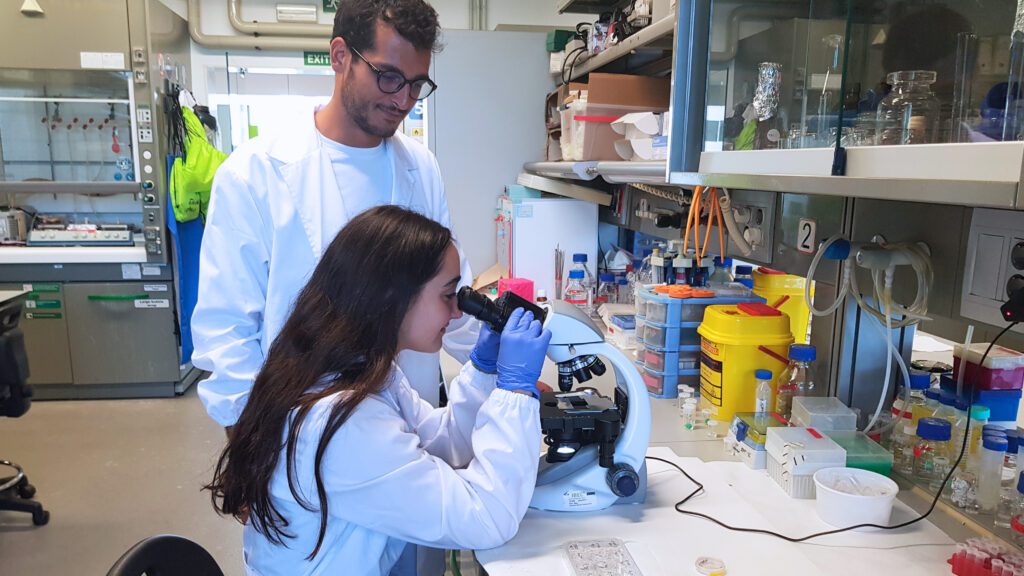
At the end of the academic year and with the arrival of summer, IBEC welcomes several students who want to enter the world of research. This year, through various programmes, 14 students were able to learn from some of the Institute’s researchers about the research carried out in 10 of its laboratories. These visits reflect IBEC’s commitment to promoting scientific careers.
Youth and Science
As part of the La Pedrera Foundation’s Youth and Science programme, IBEC hosted Alexandra Kromova and Iva Comar, both in their first year of high school. Alexandra spent two weeks with Nayeli Pérez from the Nanoprobes and Nanoswitches Lab, learning about photopharmacology and the use of zebrafish as an animal model to analyse neuromotor responses to different substances. On the other hand, Iva spent the whole of July with Cátia Lópes from the Molecular Bionics group, whose project focuses on developing an in vitro model of the blood-brain barrier, with the aim of facilitating the development of therapies for brain diseases such as Alzheimer’s.
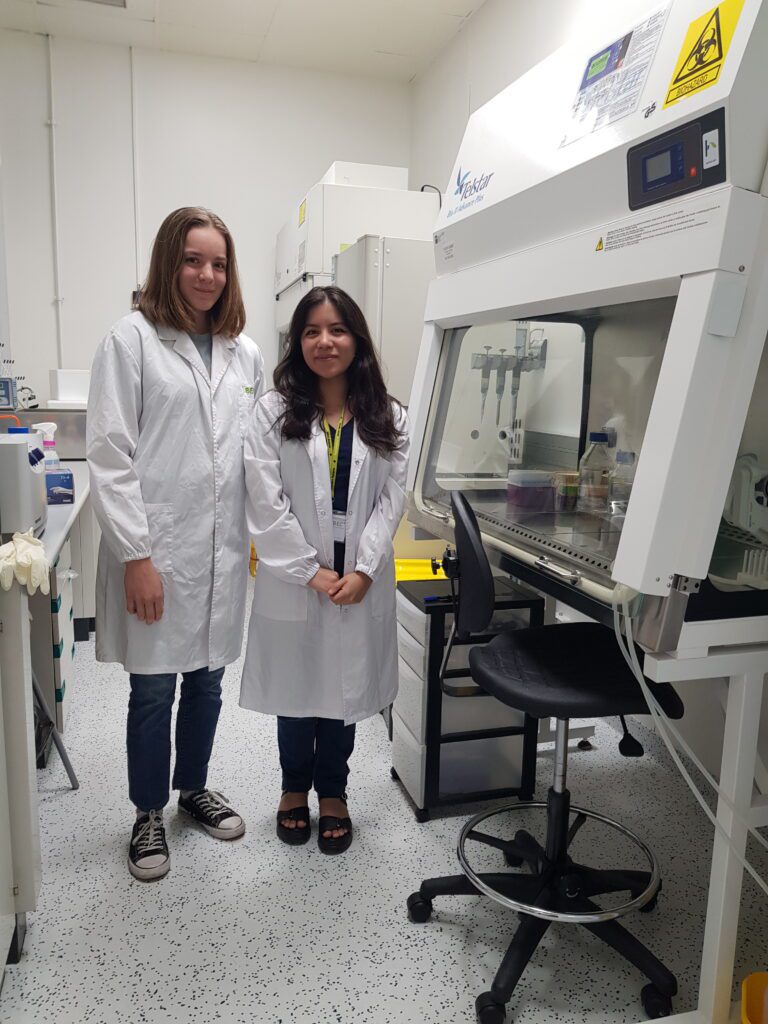
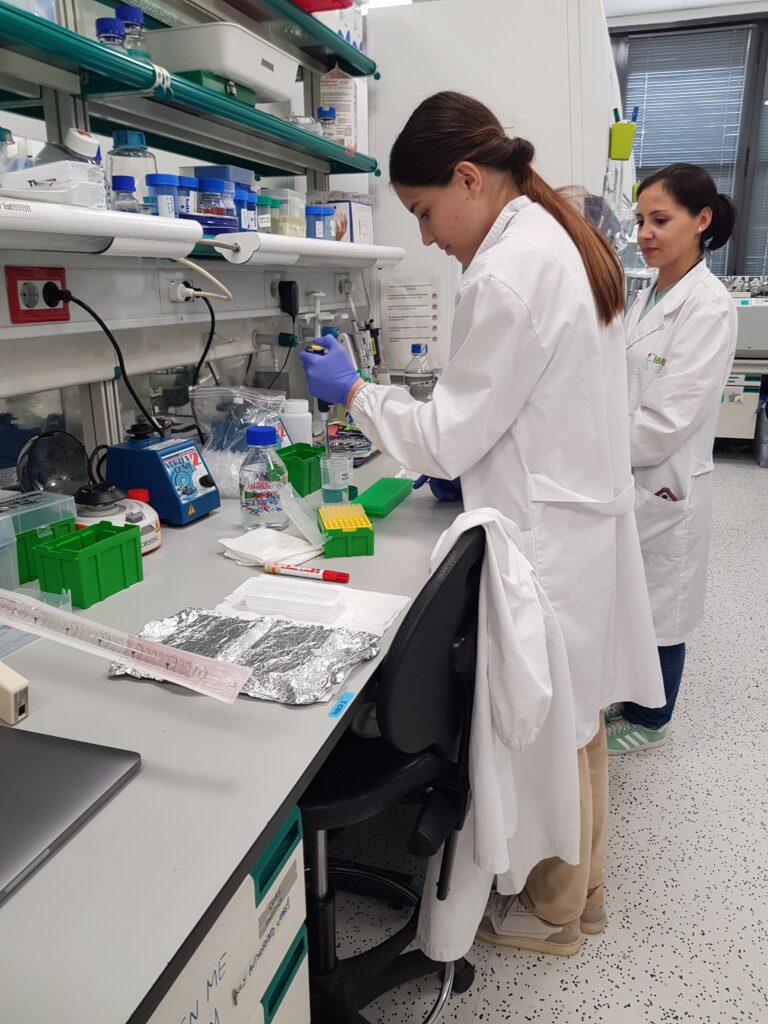
Crazy about science
IBEC also welcomed students from the Fundació la Pedrera’s ‘Bojos per la Bioingenyeria’ programme, with which IBEC has collaborated for several years. Five students stayed at the Institute to continue their research work in different research groups: Cellular and Molecular Mechanobiology, Biomaterials for Neural Regeneration, Nanobioengineering, Biosensors for Bioengineering and Biomaterials for Regenerative Therapies.
His projects covered cutting-edge topics in bioengineering research such as neural regeneration after bone marrow injury, production of maxillofacial bone grafts, artificial models for studying Duchenne muscular dystrophy, applications of surface tension in the fight against cancer, and treatments for neuroblastoma, a type of childhood cancer.
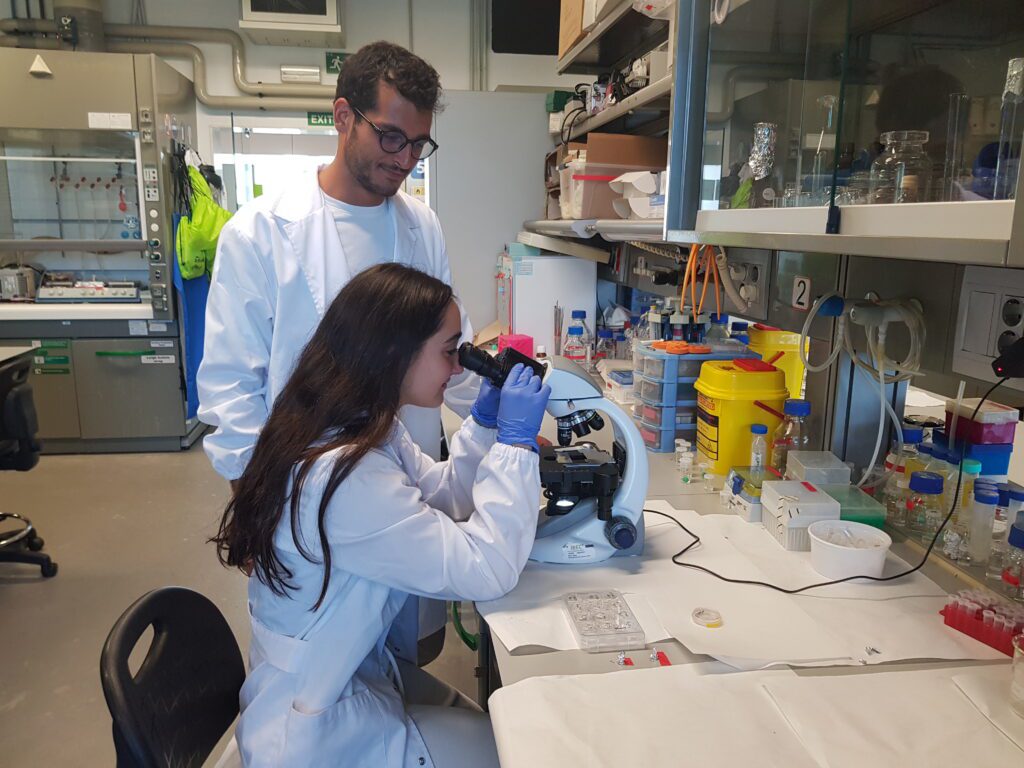

Batx2Lab
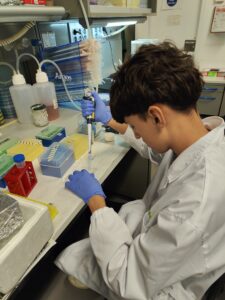
In addition, first-year baccalaureate students spent time in IBEC laboratories as part of the Batx2Lab programme at the Parc Cientific de Barcelona, which aims to promote STEM careers among young people. Five students were able to carry out the practical part of their research in the Molecular Imaging for Precision Medicine, Cellular and Molecular Mechanobiology and Integrative Cell and Tissue Dynamics laboratories.
For example, students Pau Gracia Herrera and Inés Rodriguez Nieto carried out their practical work on Alzheimer’s disease with Jorge Oliver De La Cruz in the Cellular and Molecular Mechanobiology laboratory. In this context, Pau studied how neuronal cells from patients could be used as a cell therapy against Alzheimer’s using gene editing techniques, such as the well-known CRISPR-Cas. Inés focused on the in vitro detection of the Alzheimer’s marker TAU phosphorylated to help diagnose the disease earlier.
Professional Observation Internships
Finally, for the first time this year, IBEC welcomed two 4th year ESO students from the Lycée Français in Barcelona to complete their Professional Observation Internships. This is a programme in which students spend two weeks with professionals in different fields to get a closer look at the world of work and to help them choose their future career.
Inés Roucou worked with Nuria Torras and Marcel Sorribas in the Biomimetic Systems for Cell Engineering laboratory. Inés was able to learn about stem cells and 3D bioprinting of organs and tissues, advances that aim to reduce animal testing and have the potential to reduce transplant waiting lists in the future. Inés Oeuvrard completed her internship with Samantha Morón-Ros from the Biosensors for Bioengineering group. In this case, the student discovered what organs on a chip are and what they are used for, as well as seeing different in vivo and in vitro experiments and learning about diseases such as diabetes and Duchenne muscular dystrophy.
As well as the science, the researchers showed them what their day-to-day lives are like and how a laboratory works. They also talked about the studies needed to become a researcher.






